





Are you diving into the pool for fitness, fun, or training? Whatever your answer is, how you prepare to swim and recover plays a huge role in your swimming performance. At Aqua Artist Swimming School, we believe that swimming is more than just learning the technique; it's about learning to take care of your entire body before and after each session.
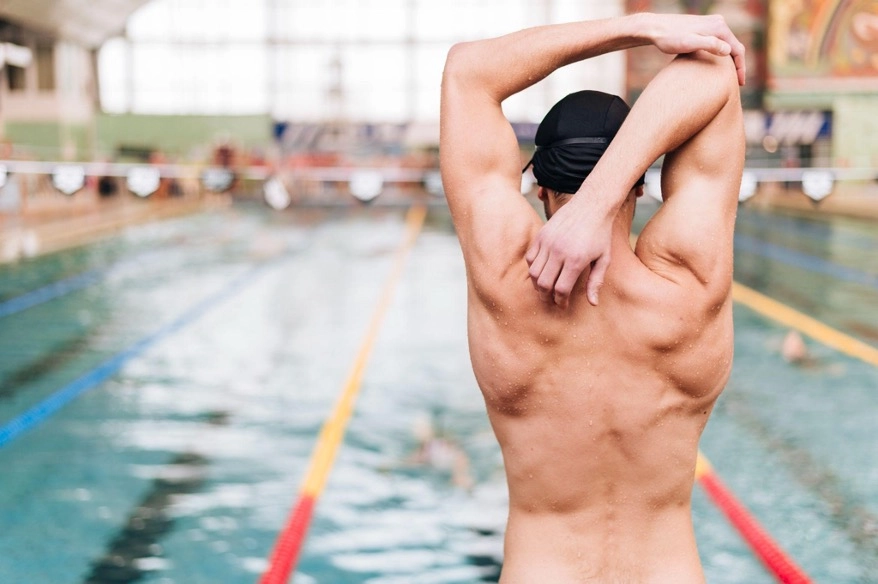
Let’s break down the essential pre- and post-swim exercises you should add to your routine to swim better, avoid injuries, and feel great every time you hit the water.
You wouldn’t start sprinting the moment you step onto a running track, right? Swimming is no different. Warming up helps your body get ready for the demands of swimming. It increases your heart rate, loosens your muscles, and prepares your joints.
Meanwhile, cooling down after swimming is all about helping your body return to normal safely after intense activity. It helps flush out lactic acid, reduces muscle soreness, and speeds up recovery. So, whether you're a beginner or an advanced swimmer, neglecting these steps is like skipping the first and last chapters of a book. In other words, you may not be in complete tune with your body.
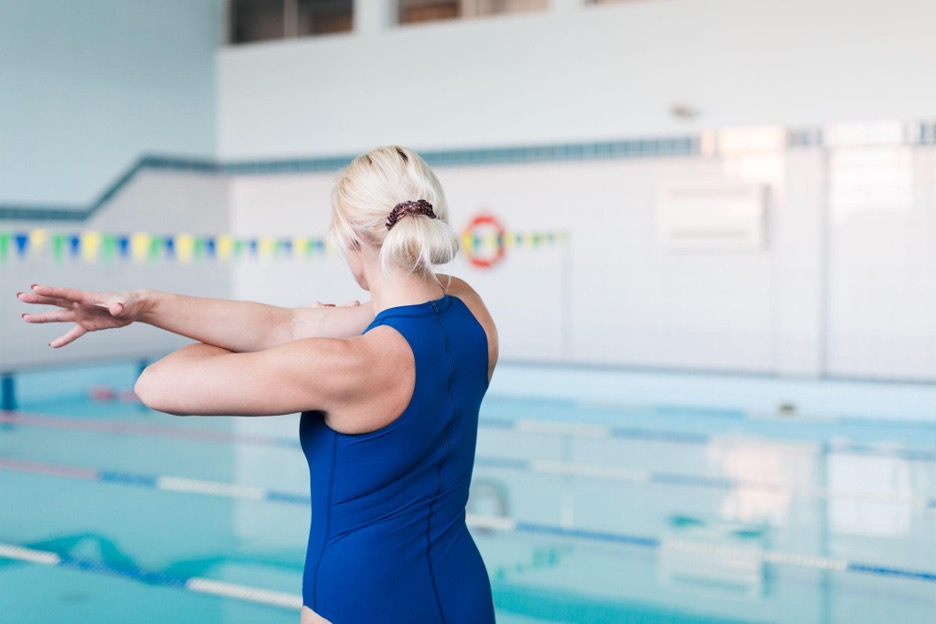
A good warm-up includes both dryland (on land) and in-water movements.
Below is a list of exercises that will help activate the muscles you’ll use in the pool.
1. Arm Circles
Do 10–15 seconds of forward and backward circles. This warms up your shoulders, since they do most of the work in swimming.
2. Leg Swings
Hold onto a wall and swing one leg forward and backward. Do 10 swings per leg to loosen up your hips and hamstrings.
3. Torso Twists
Place your feet shoulder-width apart and twist side to side gently. This activates your core and gets your spine moving.
4. Jumping Jacks or Light Jogging
Do about 2 minutes of light cardio to increase your heart rate and get your blood flowing before diving in.
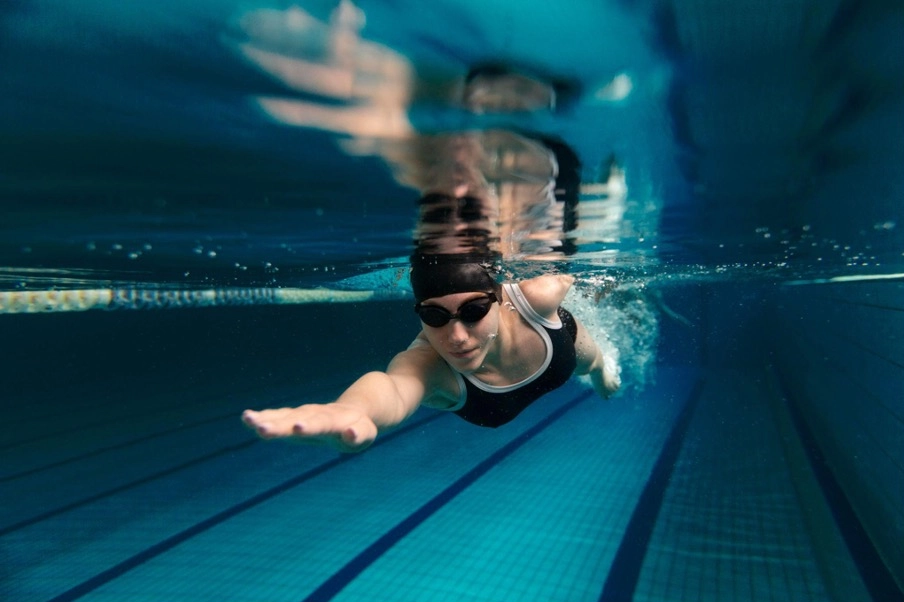
Once you’re in the pool, slide into swimming with these light movements.
1. 200m Easy Freestyle
Swim slowly and focus on good form. This helps you adjust to the water temperature and starts engaging your swimming muscles.
2. 100m Kickboard Drills
Grab a kickboard and work your legs. Use flutter kicks or breaststroke kicks at a moderate pace.
3. 4 x 50m Technique Drills
Do some stroke-specific drills at about 60–70% effort. Focus on doing it right over doing it fast. Great drills include catch-up freestyle, fingertip drag, or single-arm backstroke.
Remember, the goal of a warm-up isn’t to tire you out. It’s to get you primed for peak performance.
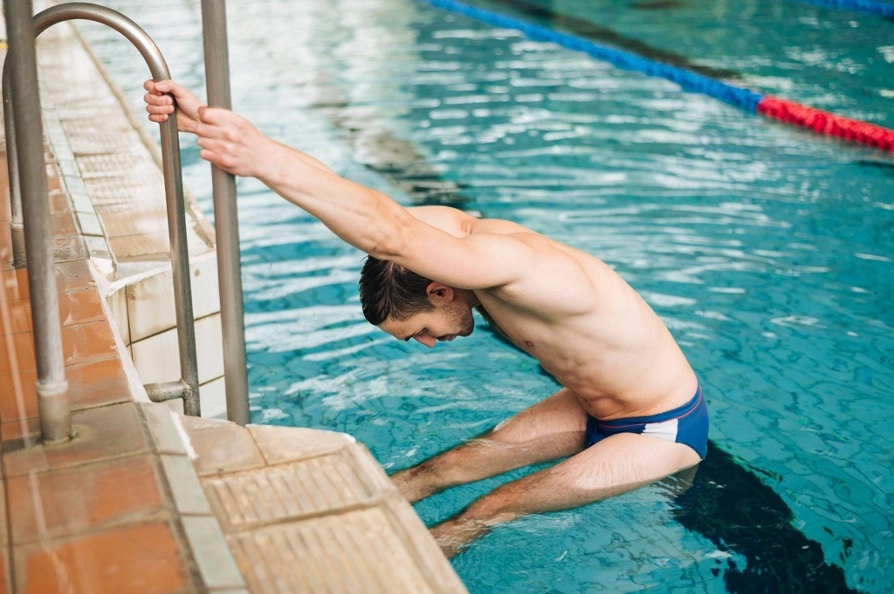
Wondering why you need to work out after swimming? Post-swimming exercises help your body recover in the following ways.
A proper cool-down is just as important as your workout. Let’s look at what that should include.
1. 200m Easy Swim
Try a light freestyle or backstroke to unwind after the long swim. Keep your pace slow and steady.
2. 100m Gentle Backstroke
Backstroke is great for opening up the shoulders and chest. This helps counter the tightness caused by the freestyle or butterfly strokes you just did.

Now that your muscles are warm and pliable, it’s the perfect time to stretch them out.
1. Shoulder Stretch
Bring one arm across your chest and use the other hand to hold it in place. Hold for 20–30 seconds on each side.
2. Triceps Stretch
Lift one arm overhead, bend it at the elbow, and gently pull the elbow with the opposite hand. Repeat this on both sides.
3. Chest Stretch
Stand in a doorway, put your arms on the frame, and gently lean forward until you feel a stretch across your chest.
4. Hamstring Stretch
Sit on the floor with one leg extended and the other bent in. Reach for your toes and hold the stretch. Do both legs.
5. Calf Stretch
Stand facing a wall, step one foot back, and press the heel down while keeping your leg straight. You should feel the stretch in your calf.
Reminder: Don’t bounce or force any stretch. Hold each one for at least 20 seconds and breathe deeply.
Here are some strategies to help you do this routine effectively.
Consistency is key. Make warm-ups and cool-downs a part of every swim session, not just for competitive swimming or long workouts.
If something feels tight or sore, give it more attention. If you’re injured or recovering, modify your routine as needed. You can always consult your swimming trainers.
Swimming may not make you sweaty, but you’re still losing fluids. Drink water before and after your swim, and eat a healthy snack within 30-60 minutes to help your body recover.
The warm-up is a great time to reinforce good technique habits. Slow things down and swim mindfully.
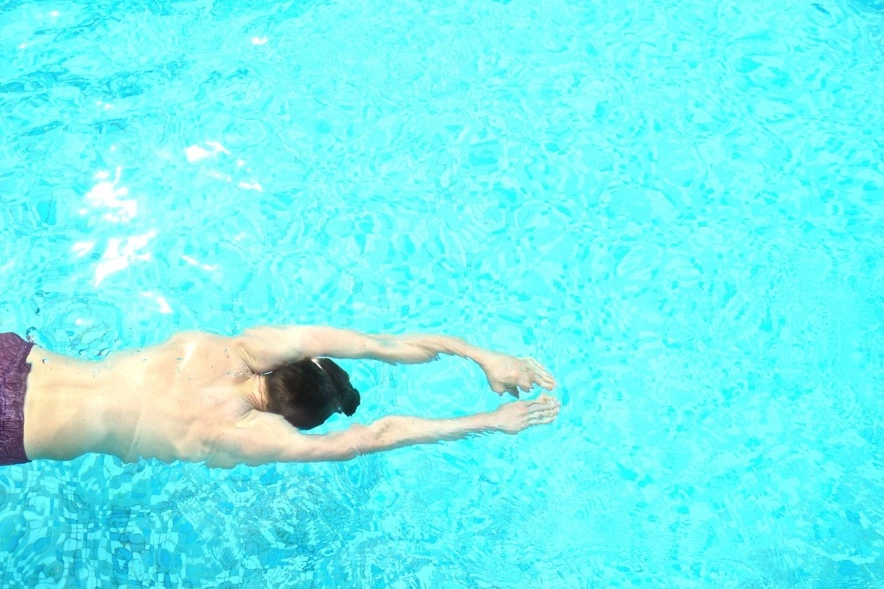
At Aqua Artist, we’ve seen firsthand how these exercises improve performance and reduce injuries. Our swimmers say they:
This isn’t just theory. It’s part of our proven approach to swimming success at our swimming school.
If you want to become a better swimmer, what you do before and after swimming is just as important as the swim itself. Taking just 10–15 minutes before and after each session to warm up and cool down can dramatically improve your performance, comfort, and long-term health. So, whether you're swimming for fitness, fun, or competition, your body will thank you for treating it right.
Ready to level up your swimming journey? Join us at Aqua Artist Swimming School, where we teach every swimmer to train smart, swim strong, and recover like a pro. Contact us today!